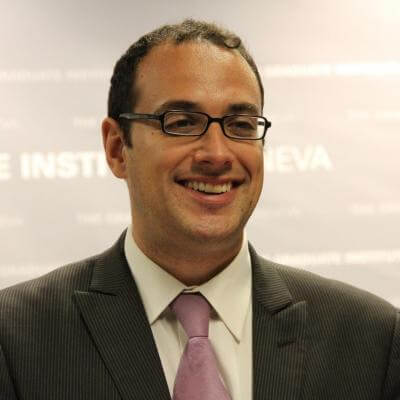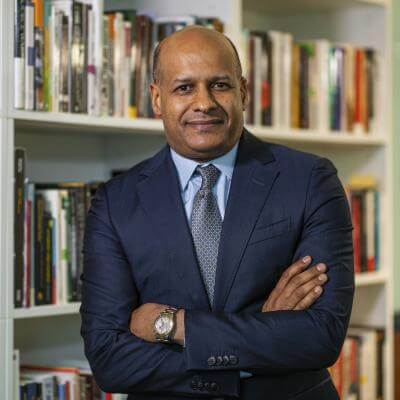The Fog of Crime: Gang Transformation and the Unpredictability of Violence in Central America
“So, what’s new in the news today?”, Adilia asked me as I put down the newspaper I’d just been reading.
“Nothing much”, I answered, “just more of the same as usual – crime, violence, and fear in Nicaragua, país de las maravillas…”
“Ay, Dios mio, what new barbarity are they writing about now?”
“Well, in El Nuevo Diario, you can choose between a murder at the Oriental Market where the victim was killed for the food he was bringing back home for his kids, or a gang war in Ciudad Sandino, while in Barricada, there’s an article about a workshop on crime and delinquency organised at the Central American University, where they presented the results of a study carried out in the 18 most violent neighbourhoods in Managua.”
“Really? Which ones were they? Were we among them? And what did the study say?”
“They don’t say which neighbourhoods were part of the study, but they do say that the main victims of violence and insecurity in Managua are those living in the city’s poorest neighbourhoods, and that they live in a virtual state of siege. That’s the title of the article – ‘Vivimos en un virtual estado de sitio’ – it’s a quote from one of the study participants.”
“Pues, that’s exactly how it is here in our neighbourhood”, Adilia responded, nodding forcefully, “we’re living nothing less than a permanent siege because of all the crime and delinquency.”
The transformation of the political economy of violence
It has become commonplace to state that the end of the Cold War and concomitant processes of democratisation and liberalisation led to a fundamental transformation in the political economy of violence in Central America, with the most visible expressions of brutality in the isthmus no longer stemming from ideological conflicts over the nature of politics, but from more “prosaic” forms of violence such as crime and delinquency, most evidently in the rise to prominence of gangs and drug trafficking organisations in the region. Such pronouncements are almost invariably followed by the more often than not incredulous observation that this shift has paradoxically led not to a decline but rather an increase in levels of insecurity, albeit irregularly distributed. There is no doubt that large swathes of the population of Central America live under some form of criminal governance Effectively underpinning such astonishment is the notion that the conventional military forces and guerrilla groups responsible for past violence in the isthmus were generally better equipped, more organised, and better trained than gangs or drug trafficking organisations, and were therefore intrinsically able to engage in more intense and higher levels of violence. Irrespective of whether this is true or not, such a perspective overlooks the fact that the fundamental transformation in the underlying nature of brutality in 21st century Central America has consequences that are far more important than a simple rise or fall in violence.
There is no doubt that large swathes of the population of Central America live under some form of criminal governance. Gangs – known variably as maras or pandillas – have come to epitomise the chronic criminal violence that replaced the brutality of the guerrilla wars and dictatorial repression typical of the past in the region, and are perceived as a stark symbol of the broken promises of peace associated with the end of the Cold War. Having said this, gangs – as has been noted all over the world – are by no means anarchic and disorderly social forms. Rather, they generally respond to particular logics and have specific dynamics that often relate to a range of fundamental human endeavours, such as the exercise of power, capital accumulation, socialisation, governance, identity, territoriality, well-being, inclusion, participation, resistance, and the articulation of gender relations. At the same time, gangs are not static social forms. Indeed, their volatility is arguably one of their primary characteristics. Certainly, as the US criminologist John Hagedorn famously pointed out, “Today’s youth gang might become a drug posse tomorrow, even transform into an ethnic militia or a vigilante group the next day.”
A “state of siege”
This volatility has significant consequences for the experience of insecurity, which is fundamentally changing, a fact that is often overlooked when considering the nature of 21st century violence in Central America. This volatility has significant consequences for the experience of insecurity, which is fundamentally changing, a fact that is often overlooked when considering the nature of violence in Central America. Certainly, gangs in the region have evolved enormously over the past three decades. In Nicaragua, for example, post–Cold War pandillas initially originated as vigilante gangs that attempted to impose a sense of local social order before transforming into economically motivated drug dealing gangs when cocaine began to flow through the country around the turn of the century. These drug dealing gangs were subsequently muscled out by more professional and internationalised drug trafficking organisations in the late 2000s. Similarly, in El Salvador, Honduras, and Guatemala, the maras evolved from initially hybrid local groups combining traditional pandilla culture with US gang culture imported by deportees in the early and mid-1990s, into two territorially disembedded “federations” – the Barrio 18 and the Mara Salvatrucha – who fought each other over spaces of extortion and racketeering. The Mara Salvatrucha then morphed into a drug and migrant trafficking organisation, however, and now dominates the Barrio 18 gang, which has re-localised and is mainly involved in small-scale extortion.
The consequences of such transformations for the nature of everyday life are immense. The exchange with which I opened this piece took place in October 1996. Although Adilia decried the “state of siege” that her neighbourhood endured, it was also clear from our subsequent conversation that it was a form of violence that she understood, having lived through several sieges of the neighbourhood during the Sandinista insurrection in 1978–79. She knew how to organise her life around this form of violence. A decade later, however, when the neighbourhood was dominated by a drug trafficking organisation known locally as the cartelito, the situation was very different. Unlike with the gang, the logic of the cartelito’s violence was not well understood. In particular, it engaged in sporadic, unexplained shootings that created a climate of terror, as the following extract from my November 2009 field diary describes: “Tonight, I was helping Adilia to bring a motorcycle into the house and lock the front door, when a motorcycle with two men suddenly surged out of darkness, and the man on the back seat pulled up a shotgun and pointed it at us. We threw ourselves to the ground screaming, but the driver shouted ‘No, no, está no, la próxima [no, no, not this one, the next one]’, and they drove on to the next house, into which they shot two rounds. Nobody has any idea who they were, or why they shot in into the neighbour’s house, but it has left everybody involved – including myself – shaken and on edge in a way that past episodes of violence never did – including those perpetrated by the gang, even when they were highly brutal.”
The “fog” of uncertainty
The Prussian military analyst Carl von Clausewitz famously introduced the notion that events in war are wrapped in a “fog” of uncertainty. Yet much of the uncertainty of war in practice actually constitutes what – following Donald Rumsfeld, the US Secretary of State during the George W. Bush presidencyThis transforms the lived experience of insecurity in ways that ultimately “join order and disorder into indistinction”. – might be termed a “known” uncertainty. Most forms of military conflict involve clear notions as to who the enemy is and who is not, what the rules of engagement are, and why confrontations occur. These are more often than not commonly understood, and any uncertainty stems from the impossibility of having perfect information about specific elements or being able to predict the outcome of conflicts. Gangs and drug trafficking organisations, on the other hand, while clearly responding to definite internal logics and dynamics, are highly volatile social forms and the underlying nature of their violence can change very rapidly as they evolve. Situations of chronic and long-lasting criminal violence where these institutions dominate, such as those associated with post–Cold War Central America, are therefore characterised by “unknown uncertainties” and this fundamentally transforms the lived experience of insecurity in ways that are inherently contingent, unpredictable, and contradictory, but ultimately “join order and disorder into indistinction”. This characteristic makes what might be called the “fog of crime” arguably far more pernicious than the so-called “fog of war”, thereby constituting putatively “peaceful” post–Cold War Central America as an overwhelming and brutal tragedy.
Map based on the data produced by the Small Arm Survey, and enriched by the Graduate Institute’s Research Office in Geneva, in collaboration with whybe.ch.
Migration, Violence and War, with Charles Heller
Graduate Institute – Research Office
State-Based Conflict since 1946
© ourworldindata.org / CC – Creative Commons
Source: Uppsala Conflict Data Program (UCDP)
Variable description: Ongoing conflicts are represented in each year in which more than 25 deaths occurred.
Violence, Killer Robots and Regulation, with Paola Gaeta
Graduate Institute – Research Office
Terminology Related to Violence and Conflict
The intentional use of physical force or power, threatened or actual, against oneself, another person, or against a group or community, that either results in or has a high likelihood of resulting in injury, death, psychological harm, maldevelopment, or deprivation.
The World Health Organization (WHO)
Derived from the Latin word conflictus, which means collision or clash. This term is understood as a disagreement between two or more parties through which the parties involved perceive a threat to their needs, interests or concerns. Source
A dispute involving the use of armed force between two or more parties, often referred to as war. Source
Militarised armed conflict between two or more states. Source
A conflict between a government and one or several non-governmental parties, often with interference or support from foreign actors.
The intentional use of illegitimate force (actual or threatened) with arms or explosives, against a person, group, community, or state that undermines people-centred security and/or sustainable development. Source
Violence that is directed against a person on the basis of gender or sex. It includes acts that inflict physical, mental, or sexual harm or suffering, threats of such acts, coercion, or other deprivations of liberty. While women, men, boys and girls can be victims of gender-based violence, because of their subordinate status, women and girls are the primary victims. Source
IHL distinguishes between Non-international armed conflict defined as “A conflict in which government forces are fighting with armed insurgents, or armed groups are fighting amongst themselves” and International armed conflict defined as “A war involving two or more States, regardless of whether a declaration of war has been made or whether the parties recognize that there is a state of war. Source
A criminal act or acts intended to inflict dramatic and deadly injury on civilians and to create an atmosphere of fear, generally in furtherance of a political or ideological (whether secular or religious) purpose. Terrorism is most often carried out by sub-national or transnational groups, but it has also been known to be practiced by rulers as an instrument of control. Source
Research Office






